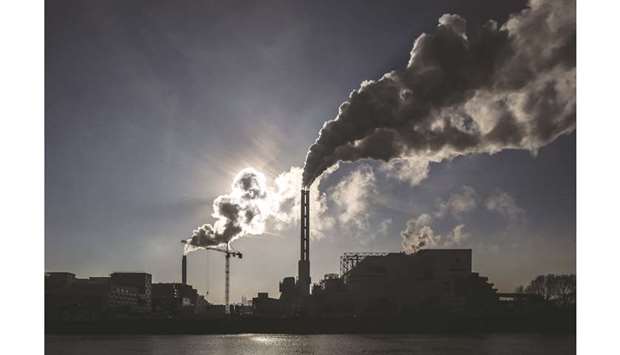How to halt global warming for $300bn

The world needs to spend $50 trillion on five areas of technology by 2050 to slash emissions and meet the Paris Agreement’s goal of halting global warming, Morgan Stanley analysts wrote in a report.
To reduce net emissions of carbon to zero, the world would have to eradicate the equivalent of 53.5 billion metric tons of carbon dioxide a year, according to the report, which identified renewable energy, electric vehicles, hydrogen, carbon capture and storage, and biofuels as the key technologies that could help meet the target.
Carbon emissions from fossil fuels hit a record last year, but estimates vary of how much it would cost to meet the Paris target of keeping the global temperature rise to within 2 degrees. The International Renewable Energy Agency says $750 billion a year is needed in renewables over a decade. United Nations scientists say $300 billion spent on reclaiming degraded land could offset emissions to buy time to deploy zero-carbon technologies.
Here are Morgan Stanley’s estimates for the five key technology areas and some of the companies leading the drive.
Renewables
- Renewable power generation will require $14 trillion by 2050, including investments in energy storage.
- Renewables would need to deliver about 80% of global power by then, up from 37% today, meaning an additional 11 000 gigawatts of capacity, excluding hydro-power.
- Solar energy’s rapidly falling cost will make it the fastest-growing renewable technology over the coming decade with a 13% compound annual growth rate.
- Stocks that could benefit include: CGN New Energy Holdings Co., China Resources Power Holdings Co. and China Suntien Green Energy Co.
Electric vehicles
- With passenger cars currently pumping out about 7% of greenhouse gas emissions, some $11 trillion will be needed to build factories, expand power capacity and develop the batteries and infrastructure needed to switch to electric vehicles.
- With increased investment, annual EV sales could grow from 1.3 million units in 2018 to 23.2 million in 2030, lifting the total number of electric vehicles to 113 million by 2030 and 924 million by 2050.
- Some of the companies to watch: Beijing Easpring Material Technology Co., Rohm Co. and Panasonic Corp.
Carbon capture and storage
- Almost $2.5 trillion would be needed for technologies that capture carbon and store it.
- While it currently costs about $700 million to capture a million tons of carbon a year, the cost of building CCS plants is expected to drop 30% by 2050.
- With more than 200 000 megawatts of new coal-fired generation capacity under construction, CCS is the only option to offset the emissions of these plants, Morgan Stanley says.
- The bank’s top picks include Air Liquide SA and Bloom Energy Corp.
Hydrogen
- About $5.4 trillion is needed for electrolyzers to make the gas, which can help provide clean fuel for power generation, industrial processes, vehicles and heating.
- In addition, $13 trillion would be required to increase renewable energy capacity to power the plants.
- Another $1 trillion would be needed for storage, with additional investment for transportation and distribution.
- Leading players include: Johnson Matthey and Air Liquide.
Biofuels
- Almost $2.7 trillion should go into biofuels like ethanol, which are currently mixed with petroleum products but will spread eventually to areas such as aviation.
- About 4% of global transportation fuel will be biofuel in 2030.
- Ethanol, the most-used biofuel at the moment will grow at about 3% a year, while a type of biodiesel called hydro treated vegetable oil will achieve must faster growth, quadrupling production by 2030.
- Companies invloved include Neste Corporation and Sao Martinho SA.








